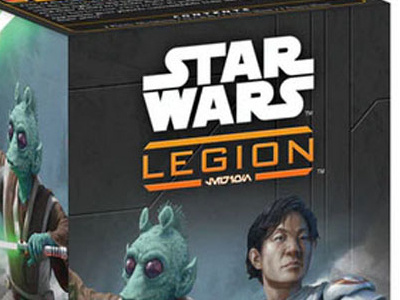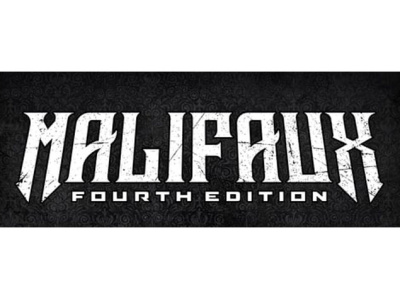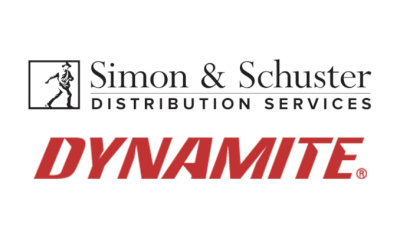Sharpening the Sword is a weekly column by retailer John Riley who owns Grasshopper's Comics, a 1300 square foot comic and game store in Williston Park, New York. This week, Riley gives us part two of his business plan process -- Products and Services.
If Part 1: the Executive Summary and Business Description (see 'Sharpening the Sword -- Writing a Business Plan Part 1') seemed a bit abstract and too much 'talking about yourself', then you'll be much happier here. Like the name implies, this is the area to describe each category of Products and Services. But before getting into each one specifically I suggest you take some time and do a survey of your store.
We're in a unique industry in that our products can change dramatically in relatively short amounts of time. While it's safe to say that WalMart will be selling a certain quantity of toasters from now until doomsday, in our industry we have had Pogs, Pokemon, Valiant comics, and far too many other temporarily hot items to list. A few years back my store was deeply rooted in CCGs such as Star Wars and L5R. Yet a few years later it's almost a non-existent category for us.
So go to your POS system, or cash register receipts, and do a survey of how each of your product categories performed last year. Here are some of the things you'll want to look at for each category:
Gross Sales
& of Store Sales
Square Footage
% of Store Square Footage
Sales per Square Foot
Profit Margin
Actual Profit
Inventory Level
Inventory Turn
If you have multiple years worth of records that's even better as you can include the changes in gross sales from year to year and the percentage change. This table can tell you some very useful things, some of which you might not want to hear. A quick look will tell you which products are performing for you and which aren't. You'll see which are sliding in sales, which are growing, which are justifying their floor space, and which aren't, and you'll see which ones justify the amount of inventory you have in them. Remember that a good rule of thumb is an inventory turn of 5 or 6.
For example, let's say that your back issue sales are $10,000 a year and they have a profit margin of 60% because you buy such huge collections. That sounds great and will help pay the rent. But what if as a percentage of your store sales they are only 5% of sales yet they take up 40% of your square footage? Is that really efficient?
Toys might be another category to look at. You may do a large sales volume in toys, but find that due to the small margin, and lack of sell through that your inventory level is constantly increasing and your inventory turn is very low, resulting in an actual profit margin much smaller than what you intended.
Of course the opposite is true as well. You may find that you do a very large percentage of your actual profit in comic books, but that they only take up a small percentage of your floor space. Perhaps this is an opportunity for expansion.
The reason you need to look at this regularly is because those small changes over time can really add up. I have a friend with a store that sells a tremendous amount of what I'll call Product A. He's been committed to this product for many years and has always done well with it. However, over the years the price of this product has gradually increased from the manufacturer while pricing pressure from flea markets and the Internet have caused him to constantly lower his price. The result? Years later he now realizes that while he's selling more of this product than ever before, he's actually making less money than ever before. While I'm not sure what his plan is going to be, it's important that he at least know that a huge part of his efforts are going into what is essentially a very low profit line.
Now that you've done your survey, it's time to write a description of each product category that you examined. Briefly describe what each category is so that someone unfamiliar with your business can understand it. Then you can analyze each category's strength's and weaknesses using the information from your survey. Besides the items you already evaluated, you may want to look at things such as supply schedule, average price point, prospects for growth of the category, shelf life of the product, perpetual vs. perishable inventory, required inventory amounts, ordering windows, etc... And of course, if your store has a particular strength or weakness in each category, here's where to note it. Basically, you want to take a long hard look at what you're going to be putting your time, effort, and money behind.
The last thing you want to do once all this information is compiled and examined is determine what exactly you're going to do with it all. What categories are you looking to expand? Contract? Give more/less floor space? How are you going to do these things?
At my store we did this about a year ago and it was a real eye-opening experience. We had been working very hard on a number of projects for a few years and decided to step back and get our bearings for a moment. What we found was pretty shocking. We found that our back issue sales accounted for about 1% of our total sales, while our trade paperback sales were about 17%. BUT... our back issues took up four times the floor space of our trade paperbacks! Now I'm a comic fan at heart and would have a million back issues if I could, but I have to pay the rent and feed the kids and that kind of math just doesn't work.
The thing is, when I really thought about it I realized that dedicating that much square footage to back issues really wasn't serving my customers. Obviously, they were more interested in trade paperbacks and other areas of the store. So condensing our back issues down to those that were actually important freed up space that we could use to better serve our customers' interests.
With your Products clearly defined, it's time to discuss your Services. What do you do for your customers that adds to the experience of coming to your store? This is the place to mention newsletters, custom ordering, clubs, events, tournaments, workshops, signings, seminars, grading and appraisals, and anything else you do for your customers that's basically a value-added experience. This may be what sets you apart from all your competitors and it's a good idea to really think about this area as it's the one area you may be able to expand on the most with the least cost.
Hopefully this gives you a lot to think about. As I reviewed my last plan to prepare these articles I was honestly surprised to see how different my business is today than when I wrote it three years ago. Some of my expectations for product categories proved true, while others were way off. But it's better to be aware of these changes and act on them than have them act on you.
Next time we'll be talking about Market Analysis and Competition.







